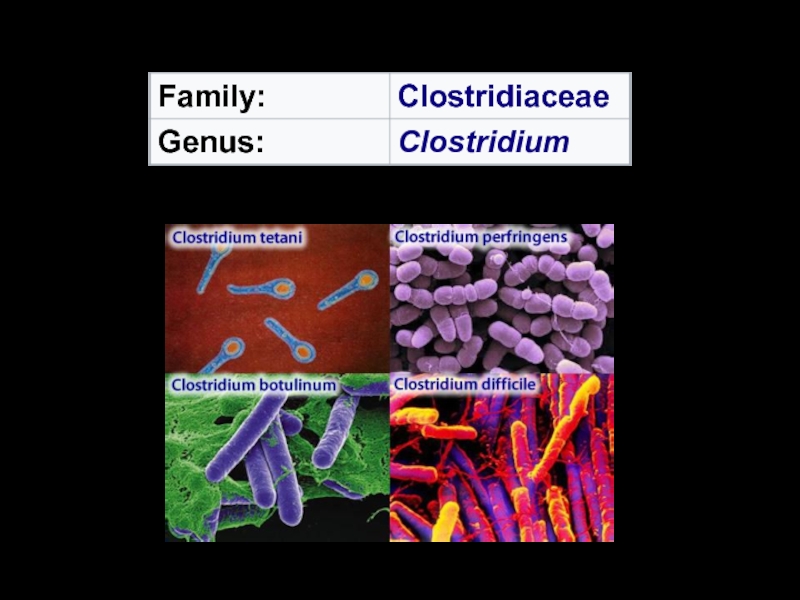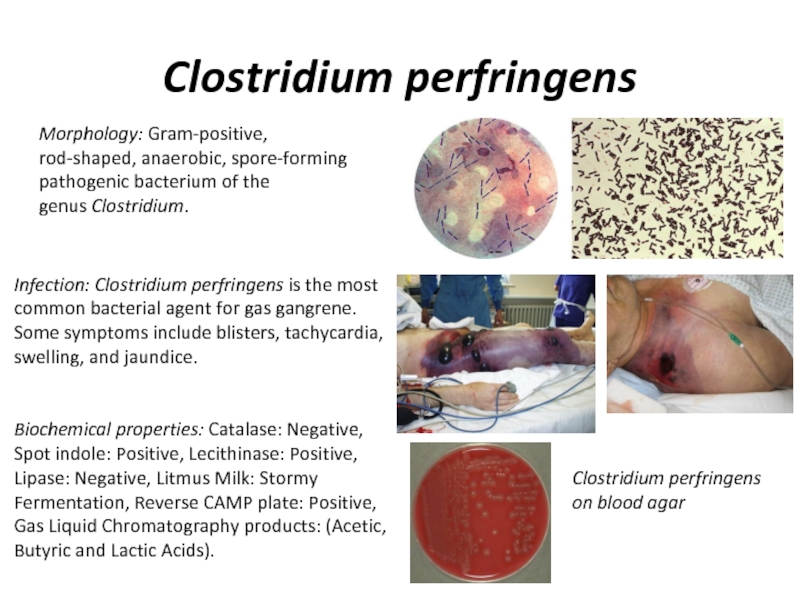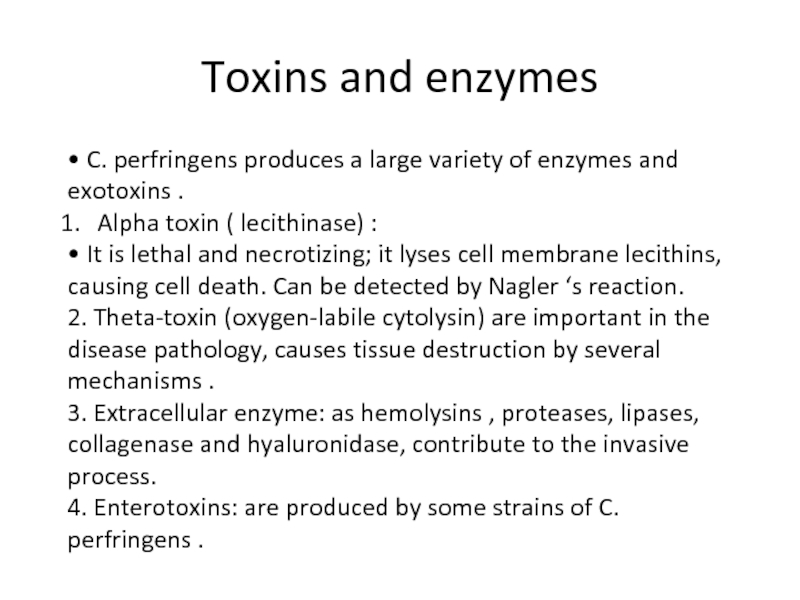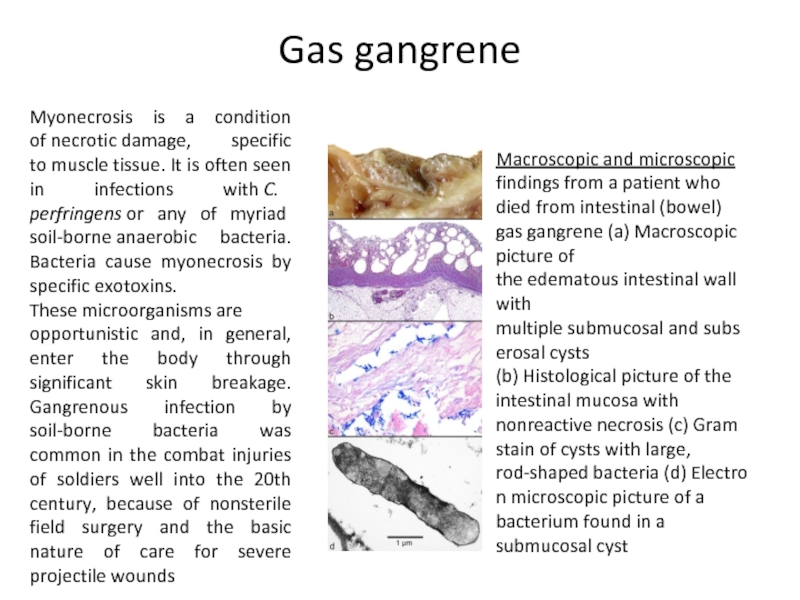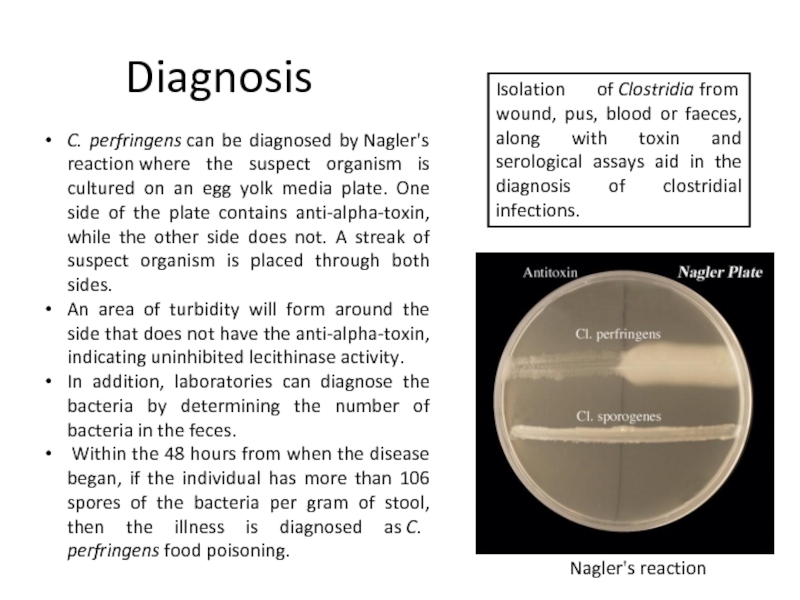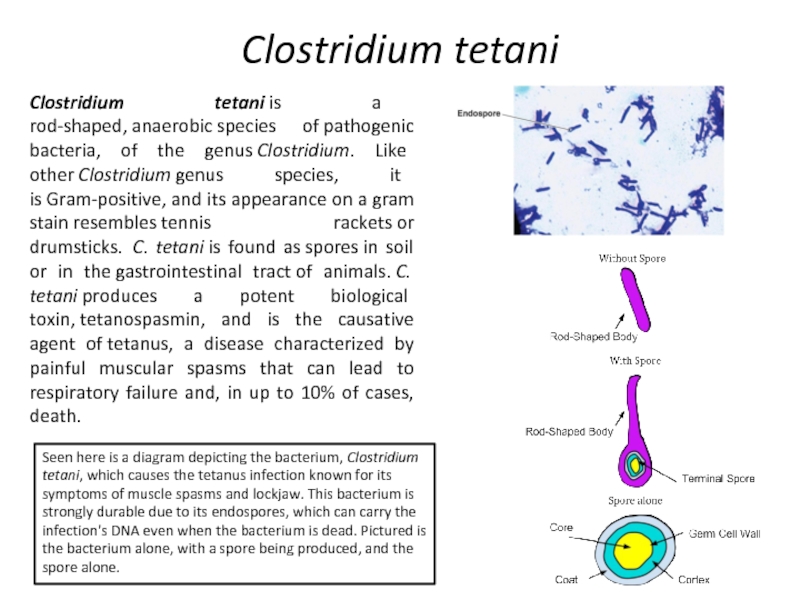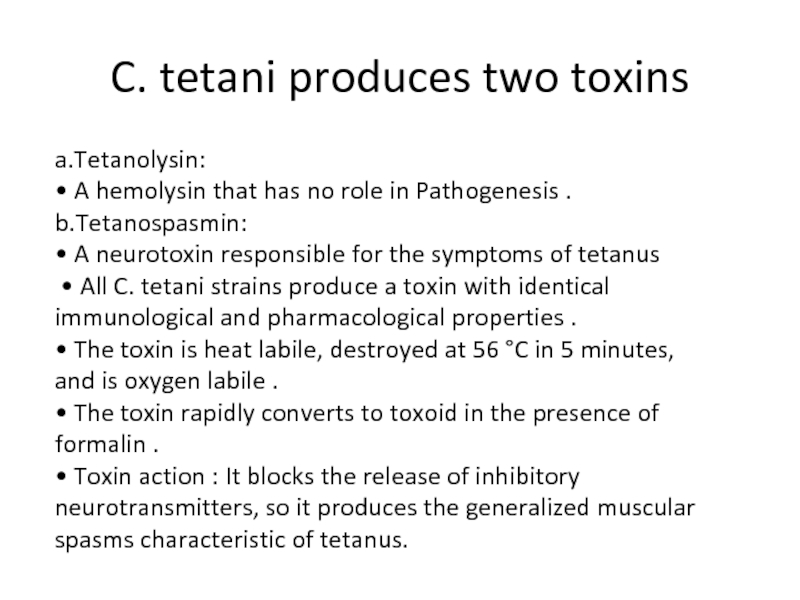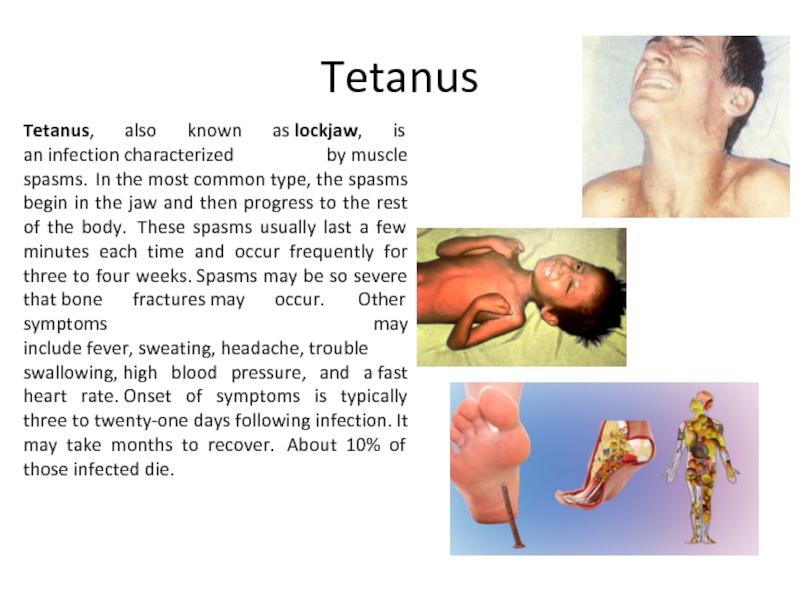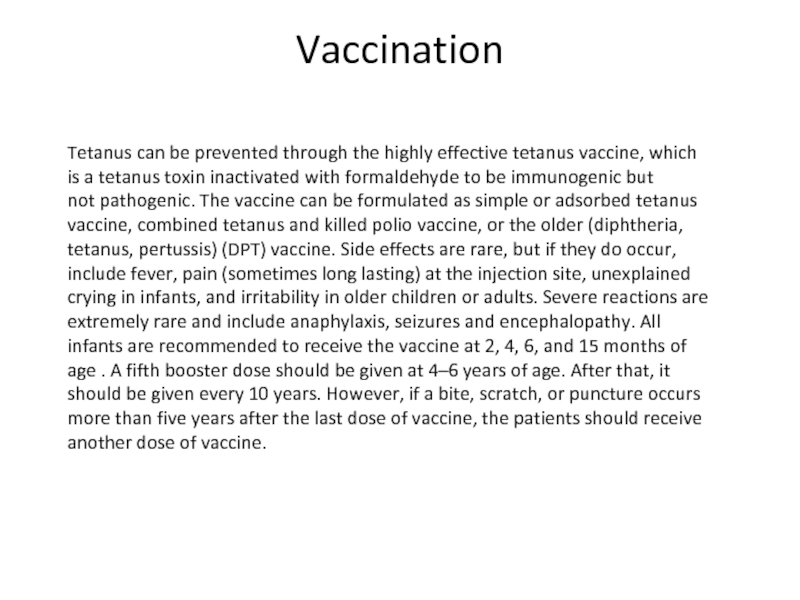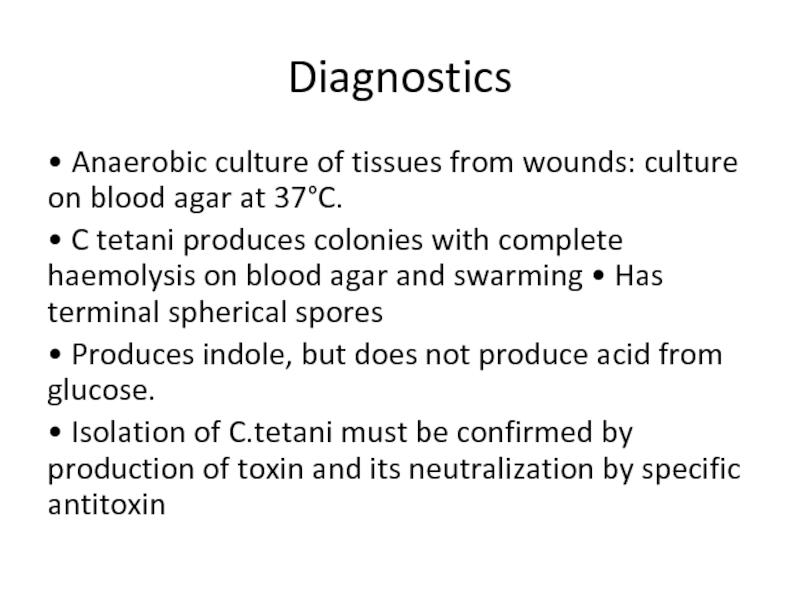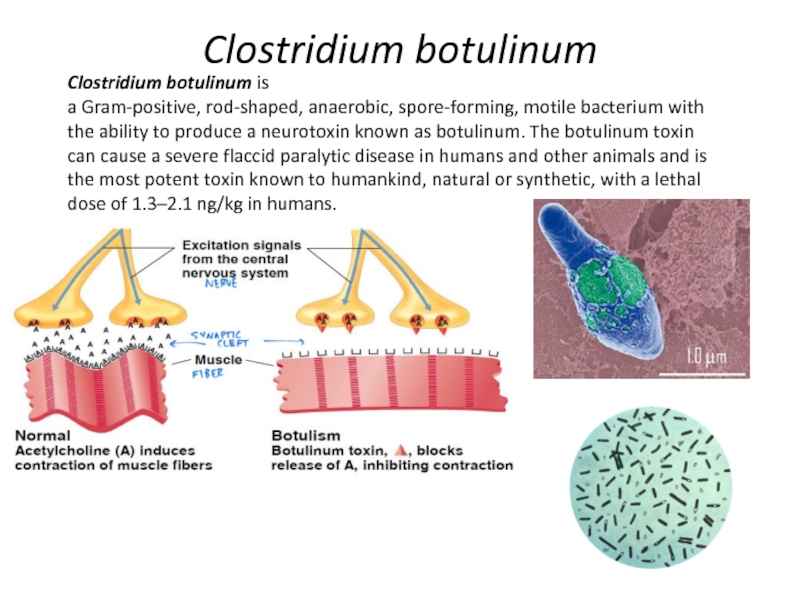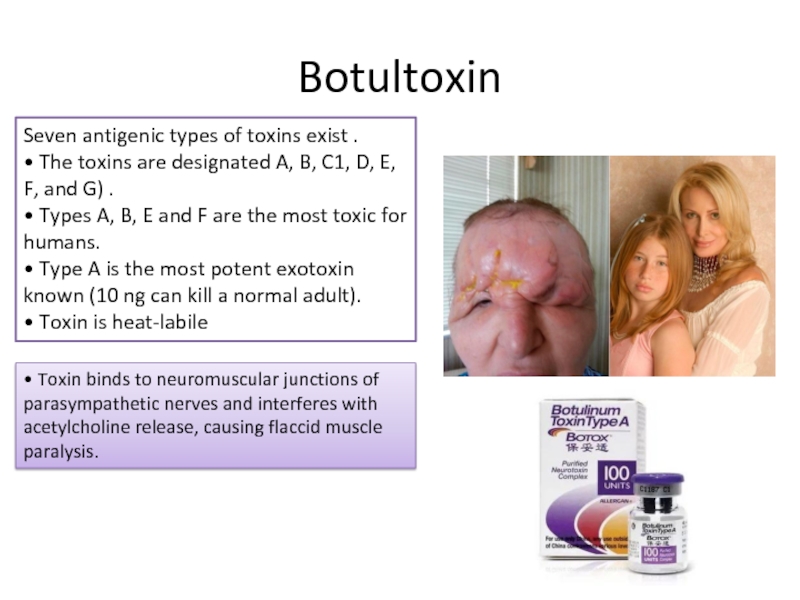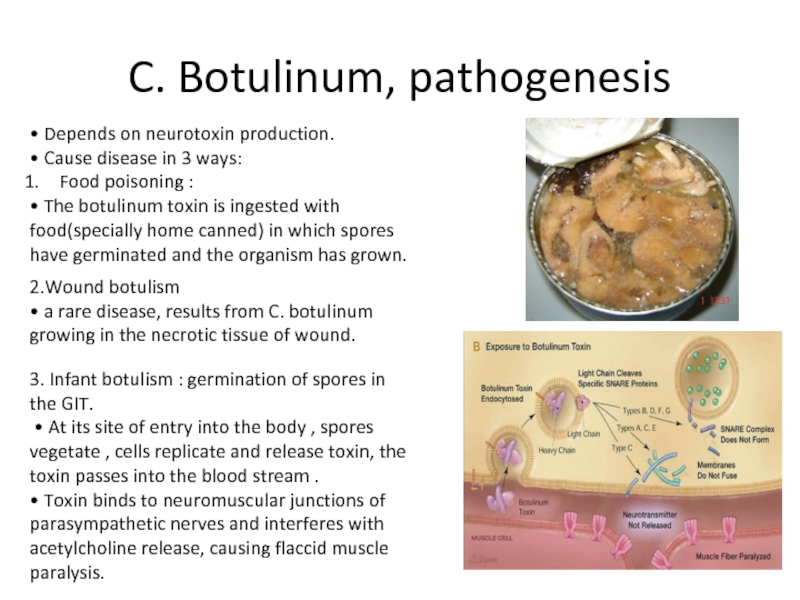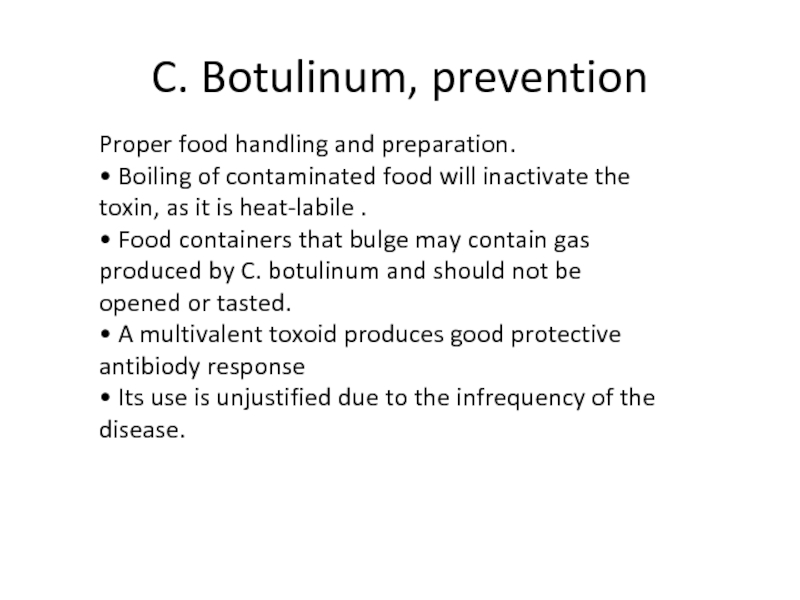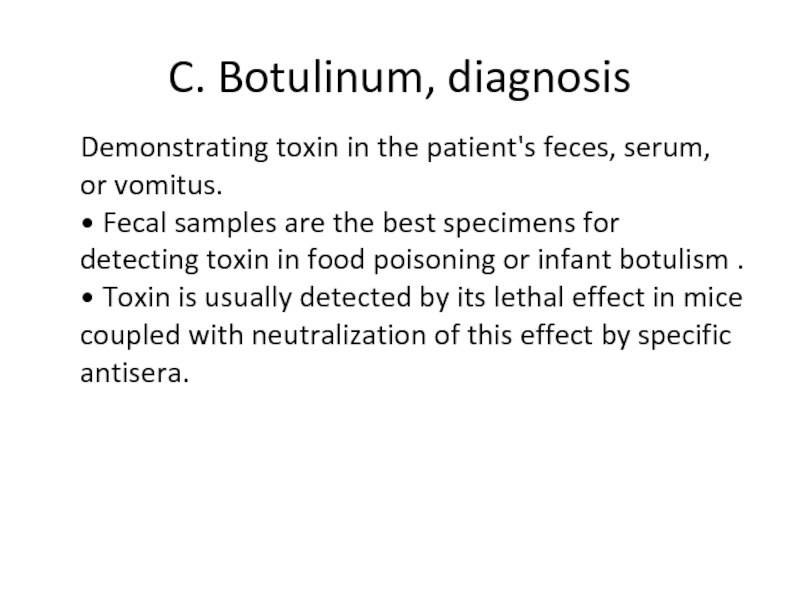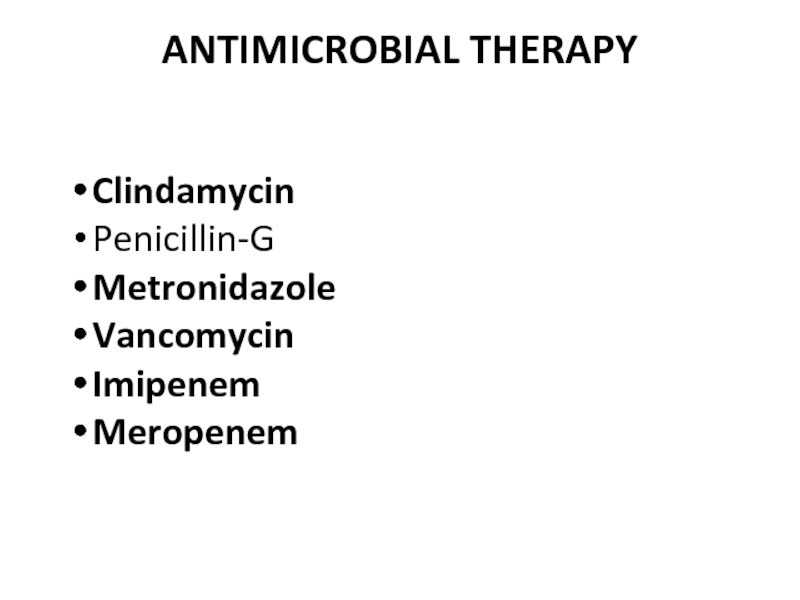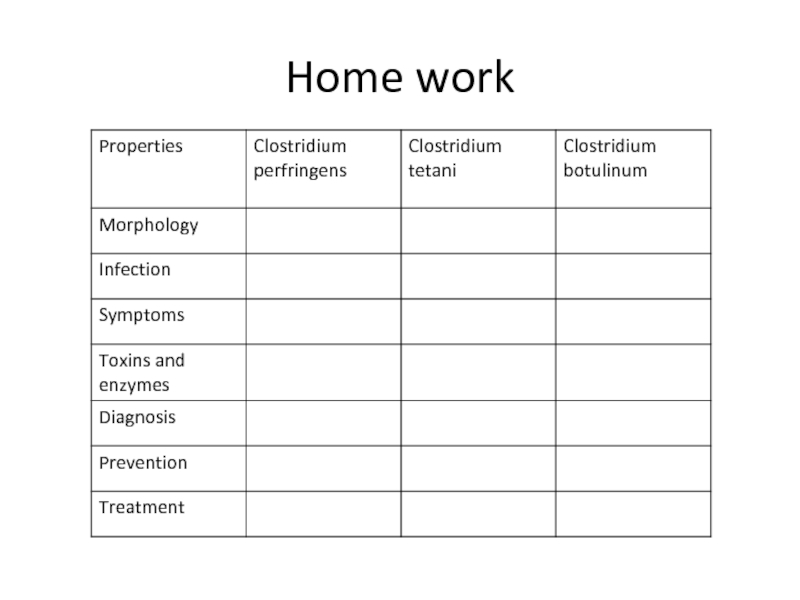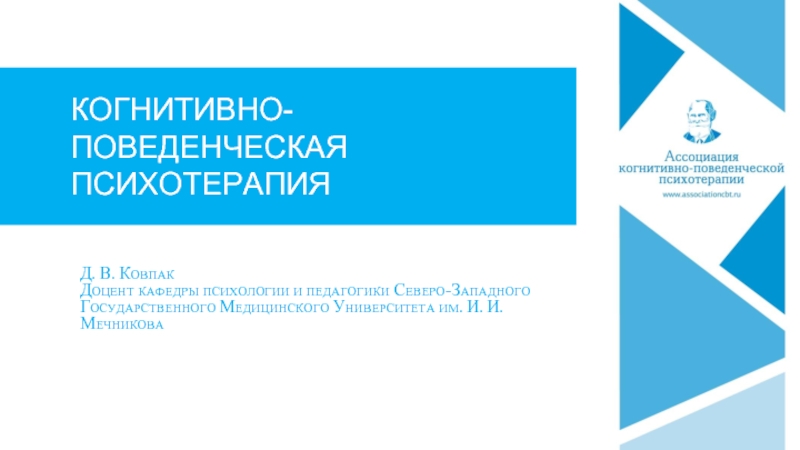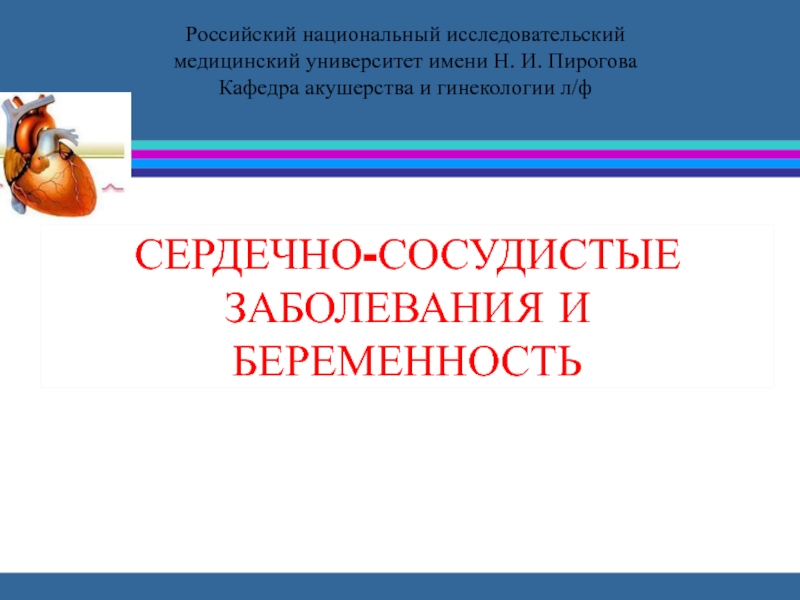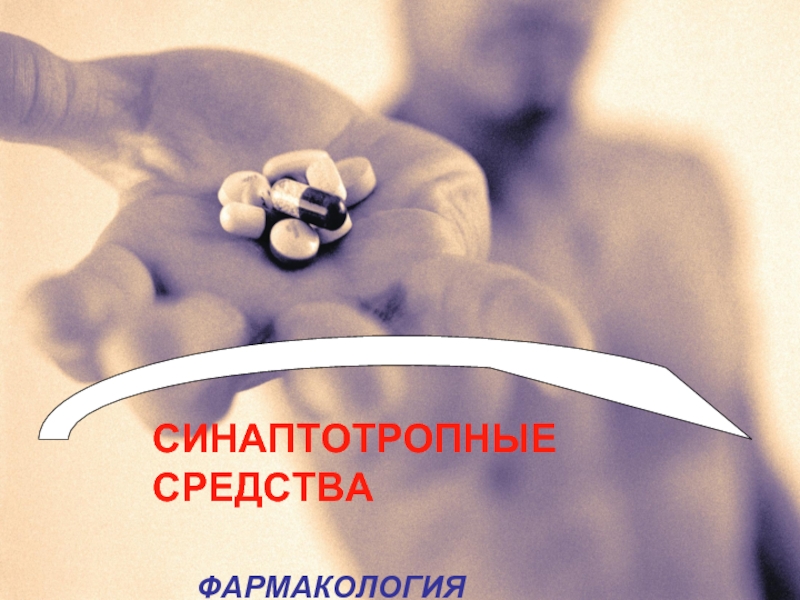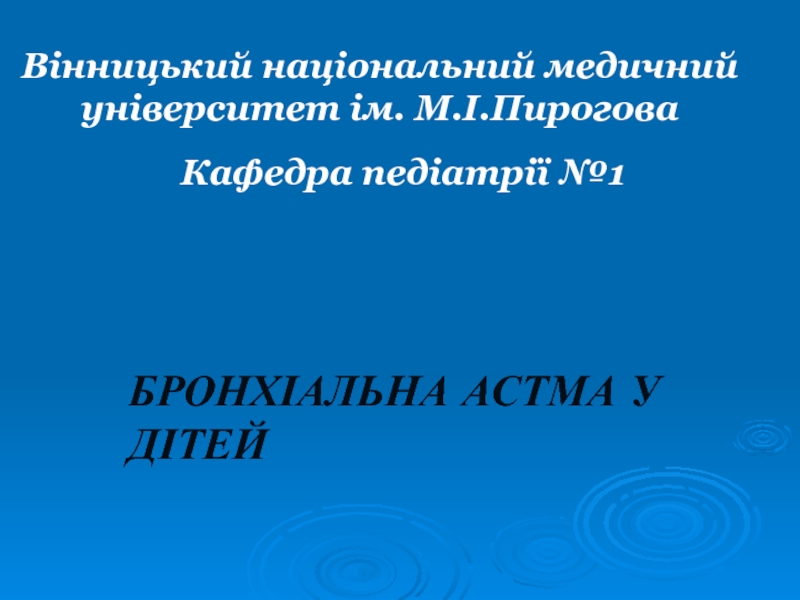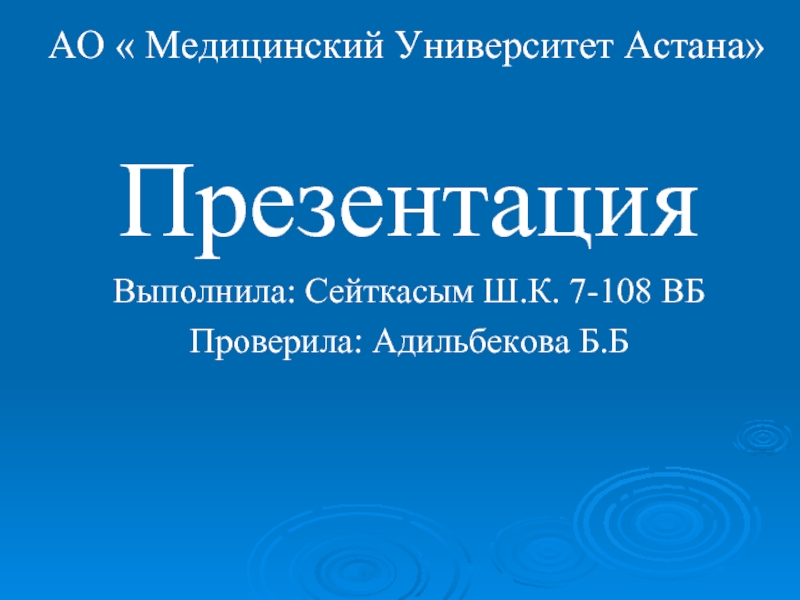suspect organism is cultured on an egg yolk media plate. One side of the plate contains anti-alpha-toxin, while the other side does not. A streak of suspect organism is placed through both sides.
An area of turbidity will form around the side that does not have the anti-alpha-toxin, indicating uninhibited lecithinase activity.
In addition, laboratories can diagnose the bacteria by determining the number of bacteria in the feces.
Within the 48 hours from when the disease began, if the individual has more than 106 spores of the bacteria per gram of stool, then the illness is diagnosed as C. perfringens food poisoning.
Nagler's reaction
Isolation of Clostridia from wound, pus, blood or faeces, along with toxin and serological assays aid in the diagnosis of clostridial infections.
